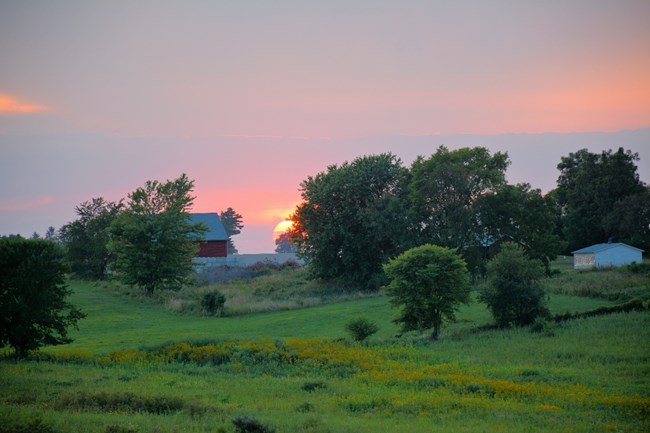Learn about NRCAs
The Natural Resource Condition Assessment (NRCA) Program provides framework, funding, and publishing support to parks to aid in the synthesis and documentation of natural resource conditions. Condition assessment reports are a tool to describe selected park resources, and record a snapshot of their current condition, identify trends, and identify potential or current threats and stressors. Understanding the condition and trend of natural resources is key for parks and NPS planners to appropriately prioritize and allocate stewardship resources.

NPS/Jim Schlett
The historic site has approximately 81 acres of reconstructed tallgrass prairie, which is a significant and rare plant community within the region. The combination of historic elements and high-quality tallgrass prairie provides a rich experience for visitors and enables a connection to history and the natural landscape.
Traditional NRCA Report: 2019
In order to better understand the natural resources and processes within Herbert Hoover National Historic Site, a Natural Resource Condition Assessment was written and published in 2019. This project was a collaboration between the National Park Service and Colorado State University. This team determined a list of resources which would create a snapshot-in-time condition rating for the park. The final list consisted of 14 resource topics:- Landcover and land use
- Night sky
- Soundscape
- Scenery
- Climate change
- Fire disturbance regime
- Air quality
- Stream hydrology and geomorphology
- Water quality
- Prairie vegetation
- Invasive exotic plants
- Aquatic macroinvertebrates
- Bird community
- Fish community
This assessment showed that fish community and prairie vegetation are in good condition; night sky, scenery and views, fire disturbance regime, and bird community are rated moderate concern; soundscape, air quality, stream hydrology and geomorphology, water quality, invasive exotic plants, and aquatic macroinvertebrates are rated significant concern; and landcover and land use and climate change were not given a condition rating due to lack of current data. Primary data gaps and uncertainties encountered were lack of recent survey data; uncertainties regarding reference conditions; weak sampling designs of previous studies; and lack of consistent, long-term data. Because the regional landscape is dominated by private land and agricultural land uses, the historic site setting provides an important place for visitors to experience the outdoors.
Management success will require acknowledging a “dynamic change context” that manages widespread and volatile problems while confronting uncertainties, managing natural and cultural resources simultaneously and interdependently, developing broad disciplinary and interdisciplinary knowledge, and establishing connectivity across broad landscapes beyond park borders.
For other reports and natural resource datasets visit the NPS Data Store.
Source: NPS DataStore Collection 7765 (results presented are a subset). To search for additional information, visit the NPS DataStore.
Last updated: December 16, 2022
